Thank You Again for Another Year of Your Service
When I received gifts as a child, my mom taught me to write and mail thank you letters the next day. This stuck with me throughout my career because of her reasoning for this simple gesture: "Even if you thank them in the moment," she explained, "an additional note expressing gratitude shows people how much you care and appreciate their time and generosity." A similar sentiment should be adopted for thanking your customers. You're probably thinking "I can't send every customer a thank you card after every purchase!" But you don't have to, there are several opportunities to incorporate thank you notes into your customer success strategy. In this blog post, we'll teach you how to show appreciation by sending a customer a thank you letter that will be sure to delight them (and make my mom proud). When thanking your customers, you want to sound both professional and genuine. While a handwritten thank you card may feel the most thoughtful, it might be logistically impossible to carry out for every customer you conduct business with. When choosing the right format for your thank you letter, consider what exactly you're thanking them for. For instance, an email would be appropriate for routine products purchased online, while new or first-time customers would appreciate more personalized messages. For example, Chewy has a team of artists that paint new customers' pets and give them handwritten thank you cards specific to their furry friends' families. In cases where a handwritten note isn't possible for each customer you want to thank, use a well-trusted customer thank you letter template to show them how grateful you are for their business, feedback, or loyalty. Start your letter off on the right foot with a correct and appropriate greeting. These are all dependent on your brand voice and tone. If you know the recipient, start your letter with "Hi ..." or "Dear ..." If you've never met the recipient, start your letter with "Dear ..." Then, double and triple-check the correct spelling of the recipient's name. If the thank you letter is formal, address the recipient as "Mr." or "Ms.," followed by their last name. If the thank you letter is informal, refer to the recipient by their first name. Generally, keeping the interaction formal will make the customer feel well respected, but keep your company's particular brand voice in mind as you write. Next, thank the recipient for whatever they gave you, whether it was a gift, a donation, an interview, or just being your customer, and express true gratitude. Say thank you, and state how much you appreciate what they gave you, and how it will help your business. For example, if a customer re-purchased your subscription product, you could write the following: "Thank you so much for re-subscribing and purchasing [Product] again. Support from long-time customers like you helps our business grow and evolve thanks to your helpful feedback." Or take a note from Abercrombie & Fitch and see how much more impactful a thank you message: Share specific details about their interaction with you to make the recipient feel like whatever they've given you was useful and valuable. For example, if a customer submitted a feedback survey, you could include details like the following: "Thanks for completing the survey about your experience using [Product]! Your feedback helps us improve our offerings for you and other customers. You make a good point about it being too difficult to find cancellation information on our website, and I've passed that feedback along to our web design team to suggest making it more readily available." Whether it's the impact their purchase has on your growing business or feedback that can help you improve, the more you let them know they made a positive contribution will make them feel like they contributed more than just their money and time. Wrap up your thank you letter by looking toward the future with the recipient. If working together was mutually beneficial, express to them that you would like to work together again. You can build customer loyalty by following this additional step as other companies may end their client relationships when the service has been provided. Close your letter with a final line, with something simple like: "Thanks again for your [Gift/Support/Purchase/Feedback]." There are a lot of different closing salutations you can end your thank you letter with. For business relationships, close your email with "Best regards ..." or "Kind regards ..." (Read our full explanation of when to use which closing in this blog post.) Other business-appropriate closings can include: Once you've wrapped things up with a friendly sign-off, be sure to sign your work. If you're communicating with a new customer, add formality to your signature by including your last name. If you're hand-writing your letter, sign the document in cursive for a more professional aesthetic. These details make a big difference in determining the tone of your letter. Whether you're writing a thank you letter for a new customer or one of your most loyal, these tips will help your message land. It's important to remember that thank you letters effectively extend the conversation with your customers. So, you should include an option for customers to respond to you if they have additional questions about their order, want to submit feedback, or are interested in making another purchase. If you're using marketing software to email your contacts, be sure to check if customers can respond directly to the return email address. Some shared inbox tools will use a placeholder email address, which allows you to send 1:1 emails to a large audience but it doesn't allow your recipients to message back. If you can't edit your reply-to email, then you should consider adding an email address to the message itself so customers have a direct way to contact you. Now, let's take a look at the different elements that every thank you letter should include. Thank you letters should be personalized every time you use them. However, some core components should be included regardless of who and what you're thanking them for. Below are the elements required for an excellent thank you letter. Download this Free Template Thanking a customer should be sincere, but on-brand. That's why we've compiled this collection of Thank You Letter Templates for your team to build a backlog of letters for thanking your customers directly. Customize each template to fit your needs and send them out for a moment of customer delight. Before you begin writing your thank you letter, you should consider the best medium to use for the occasion. Generally, handwritten letters are considered more sincere than emails or text messages. That's because these notes take time to write, and this demonstrates sincerity and appreciation on your end. If that isn't an option, gratitude can be shared through a thoughtful email, text, or voicemail. Your letter should begin with an appropriate greeting. If you have a prior relationship with the recipient, your greeting should be warm and courteous. Use their first name to create an inviting, friendly tone that reinforces the bond you have developed with them. If you're less familiar with this person, your greeting should set a professional tone for the conversation. Address the recipient by their appropriate title and use an opening that fits your relationship with them. For example, if it's an important stakeholder, your greeting might be, "Dear Mr. Fontanella." Or, if it's a new customer you could start with, "Hi Mr. Fontanella." Picking the right greeting ensures your thank you message is received with the intended context. The next section should include a statement that outlines what you're grateful for. Use specific details to describe what the recipient did to warrant this note. Including specifics makes your message more sincere because it personalizes the content for the reader. In this section, try to include the word, "you" as much as possible. This will make your message customer-centric because you're focusing on what the recipient did for you and your business. After you give thanks for what they have given or done for you, briefly explain why you value it in more detail. Elaborate on how their action is important to you so they know they've made a positive impact on you. For example, if the person gave you a physical gift, say how you intend on using it and get specific. More context will make them feel even better about giving it to you. If they provided you an act or service, say how much easier it was to complete your work with their help. Following the expression of gratitude, the next section should acknowledge your future relationship with the recipient. This portion will let the customer know that you intend to continue working with them over time. This is important for long-term relationship-building because it sets the expectation for future interactions. For friendly or familial relationships, use the friendly, informal closing that you're comfortable with, such as: Finally, your thank you letter should conclude with an appropriate closing statement. Thank the recipient again, and offer them options for contacting you if needed. Then, conclude the message with your preferred sign-off, followed by your signature. Next, let's talk through some digital approaches using customer-centric language you can use in customer thank you emails. Here are a few best practices for writing a successful customer thank you letter no matter what industry you're in. If you've decided a thank you email is the best route to take, make sure your subject line gives your customer a preview of what's awaiting them. Words like "thank you," "valued customer," "your loyalty," and "appreciated" are all good signals that the customer can expect a positive message from you, but they aren't the only terms to choose from. Take a look at these examples to get creative in how you open your thank-you message: A thank you letter should not be used as an opportunity to get your customers to spend more money. Nothing makes a letter from a company (masquerading as a thank you letter) seem more insincere than immediately asking the recipient to buy something else. There are plenty of opportunities to share offers and new products with your customers — but this is not one of them. It's perfectly fine to send a customer a thank you letter that's simply that — a thank you note. Other acceptable options include a link to a customer feedback survey, personalized educational content, or information about a loyalty program. If you're going to enter your customers' email inboxes, make sure the thank you letter is well-crafted, personalized, and sincere. Our inboxes are already overflowing with automated email templates sent en masse from brands every day. Make sure your thank you email sounds as human as possible to communicate just how thankful you are for a customer's business and loyalty. As an added touch, address the email from a real person at your company — ideally in leadership — to further communicate authenticity. Part of writing like a human means understanding there's another human reading your message. If your email feels insincere or perfunctory, it won't have the intended impact on your audience. While they'll appreciate the gesture, it won't leave an impression that will remind them of your brand in the future. One way you can spruce up your thank you is by including something personal in your message. This could be a short story about how this purchase impacted your business, a noteworthy interaction that happened between your team and the customer, or just a funny joke and a lighthearted reminder that your support channels are always here to help. Whichever you choose, it should add more context to your email so you aren't just saying, "thanks for buying that" then sending the customer on their way. It's important to remember that thank you letters effectively extend the conversation with your customers. So, you should include an option for customers to respond to you if they have additional questions about their order, want to submit feedback, or are interested in making another purchase. If you're using marketing software to email your contacts, be sure to check if customers can respond directly to the return email address. Some shared inbox tools will use a placeholder email address, which allows you to send 1:1 emails to a large audience but it doesn't allow your recipients to message back. If you can't edit your reply-to email, then you should consider adding an email address to the message itself so customers have a direct way to contact you. While you should try to personalize the thank you letter for each customer, a template can provide consistency for branding elements like fonts, colors, and imagery. This will also save your team time as you won't have to start from scratch when you begin writing. Instead, you simply have to personalize the template and include whichever information or offers that might be relevant at this point in the customer's journey. If you running an ecommerce business, then you may already interact with your customers via email. The section below can help your team write eye-catching thank you letters after customers complete a purchase on your website. In ecommerce, thank you notes are an effective way of staying in touch with your customer base after they make a purchase. By sending a letter or email after an order is delivered, you're not only extending a courtesy, but you're also providing a direct channel to ask questions, provide feedback, or even make a repeat purchase. One perfect example of this comes from the brand, Chewy. Chewy sends its customers one-of-a-kind portraits of their pets, along with a friendly reminder that its team can be reached 24/7. As you can see from the image below, this is an extremely cool way for an ecommerce brand to thank its customers for their business while reminding them about the support options available to them. Image Source While a personalized portrait of a pet is a sure-fire way to earn your customer's appreciation, you don't have to give away a prize with every "thank you" message. For most customers, receiving a note in the first place will show that your company is grateful for their business. But, if you want to step things up, writing your thank you as a hand-written letter is an excellent way to grab your customer's attention. Now that you know how to write an effective customer thank you letter, here are a few examples of how real brands are doing it. Here's a thank you email received from Omsom — a direct-to-consumer food brand specializing in flavor packs that allow you to cook with authentic Asian ingredients and flavors at home. The smiley face emoji and personalization (along with the catchy subject line promising a discount) make you want to click to read this email. The recommendations on what starters to buy are also a nice touch. Omsom effectively communicated thanks, personalized the email, and didn't ask too much of the reader. Additionally, it provided value by offering a discount to the recipient. Ecommerce brands love to send out emails about new products and offers, and what I appreciated about this thank you email was its simplicity. Omsom's thank you letter is a great example of positive reinforcement. In the first sentence, the company tells me which action resulted in my being thanked. This email wasn't pushy or sales-y and the authentic writing style made me smile. Here's a thank you letter received from gourmet food delivery company Goldbelly. All Goldbelly did was thank me for my order — and offered an easy way for me to track the shipping status. It's simple and effective. Since Goldbelly works with food, all of the food-related language used in the email is a nice touch and reinforces the brand. Here's a thank you letter I received a couple of days after a trip on JetBlue: You might already know that JetBlue has some of the best customer service of any airline out there, consistently going above and beyond for their customers. But sometimes, simplicity works too. This letter thanked me for flying with JetBlue on a recent trip, and it showed me how I could earn more reward points. Frequent flyer programs help travelers book expensive flights at a discount — so I appreciated JetBlue pointing out how to get more value out of my future bookings with them. That's true customer appreciation — sure, JetBlue wants me to book future trips with them, but they're also showing me how to get more bang for my buck with their loyalty program. Here's a thank you letter from Memphis-based coffee company Cxffee Black: Cxffee Black has built a brand around reclaiming high-quality coffee production as a part of Black culture. The husband and wife owners have created a sense of community around coffee, culture, and education. They have rolled out several new initiatives over the last few months, working directly with growers in Ethiopia. The letter is simple and honest, thanking me for being a part of its community and the journey. This letter is sincere — it's not trying to do anything or sell me anything, it's just about cultivating community and appreciation. It also informs customers that there may be a bit of delay with shipments thanks to the boost in interest. Here's a thank you letter sent from the Snooze Hotel in Fort Lauderdale: This is another great example of a short and sweet thank you letter, but with the addition of asking for feedback. That is made easy with a simple 'yes' or 'no' button, which takes less than a second to hit. It's short and to the point. The note shows their appreciation for my business in a simple two sentences. Then, they make it super easy to give feedback by adding a clickable 'yes' or 'no' button. Here's a thank you letter I received from the World Wildlife Fund at the end of one year when I donated: The letter led me to this thank-you video WWF produced, which showcased how my donation was used in action: Showing customers exactly where their money goes is an effective way to thank customers, especially if they're donating to a cause. (Plus, who can resist cute animals?) After experiencing a pandemic shutdown, pilates studio The Floor sent out this heartfelt note to all of their customers: This email does a fantastic job of using a holiday to show appreciation to their customers. It's not a cheesy "This Thanksgiving we're thankful for you" email, but a sincere one. In this example, The Floor makes it clear that they value their customers and get specific about why: for continuing to support the studio throughout the pandemic. Getting specific about why you appreciate the customer adds a layer of honesty and sincerity to your message. Here's the snail mail example of customer appreciation that I promised — a thank you letter (and a pan flute) I received from Capital One: Image Source Here's the necessary context: Mrs. Georgette made a simple call to Capital One to fix an unwanted charge, striking up a conversation with the call operator. She shared news of her growing family and the customer support rep made a note to both fix the situation at hand and make her feel good with a baby gift basket. This gift probably cost Capital One less than $20 in total but helped Georgette feel the love. A thoughtful and personalized gift and thank you note are delightful to give to customers who feel the company's agents really care. This thank you gift isn't the typical "thank you for your purchase" gesture. Capital One empowers its service reps to delight customers in ways that are hyper-personal and relevant. If you're inspired by this idea, check out this article on relationship marketing. Here's a thank you letter that my colleague, Clint, received after downloading UH Bikes, a Cleveland-based bike sharing app. This thank you letter is great because it answers everything new users would want to know after downloading the app. It explains how to rent a bike and provides answers to common questions you may have about the service. The information is explained with bullet points which keeps everything concise. This makes onboarding much easier for new customers, especially Clint, who was on vacation in Cleveland and was completely new to UH Bikes. He quickly signed up on the app, then used this handy email to rent a bike. Without these step-by-step instructions, it would have taken him much more time to reserve a bike. After you sign up for the Service Blog's daily or weekly newsletter, you'll receive this thank you letter. This email is a great example of a simple thank you letter that can be used for any new user who provides you with their email address. It's short, to the point, and still incorporates a call to action as well as the next point of communication the customer can expect. After signing up for a free copywriting course, this email was sent from digital entrepreneur Marie Forleo: This email is gives the reader information about what they should expect next and opens up a dialogue for questions. Stumped about getting started sending your own thank you letter? We've put together the template below to help you along. Writing thank you letters may not be the most popular way people spend their time at work, but it's a task that's sure to make your customers feel valued. Whether you send a handwritten note, an email, or even a text message, this act of kindness can go a long way. Unsure of where to start? Use the templates in this post and download more for free to start delighting your customers right away. Editor's note: This post was originally published in July 2019 and has been updated for comprehensiveness. ![→ Access Now: 11 Customer Thank You Letter Templates [Free Prompts]](https://no-cache.hubspot.com/cta/default/53/5796f0a8-8e32-4782-a574-ac08771adb45.png)
How to Thank a Customer for Their Business
1. Select a format that works for your business.
2. Use an appropriate greeting.
3. Express thanks and appreciation.
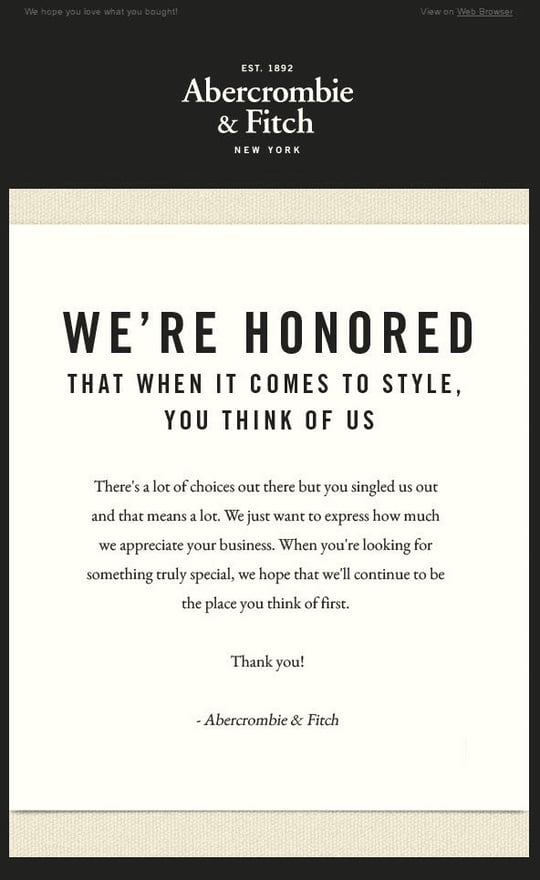
4. Include specific details.
5. Look toward the future.
6. Say "thank you" again.
7. Use an appropriate closing.
8. Sign your thank you letter.
9. Give customers a way to respond.
What to Include in a Thank You Letter
1. Use thank you letter templates.
2. Determine the best communication medium.
3. Use an appropriate greeting.
4. Express gratitude.
5. Tell them how they made an impact.
6. Acknowledge the future.
7. Add a proper closing.
How to Write a Thank You Letter to Customers for Their Business
1. Say something positive in the subject line.
2. Be judicious with what you promote.
3. Write like a human.
4. Include something personal or genuine.
5. Provide customers with a way to respond.
6. Start with a template your whole team can use.
Thank You for Your Order
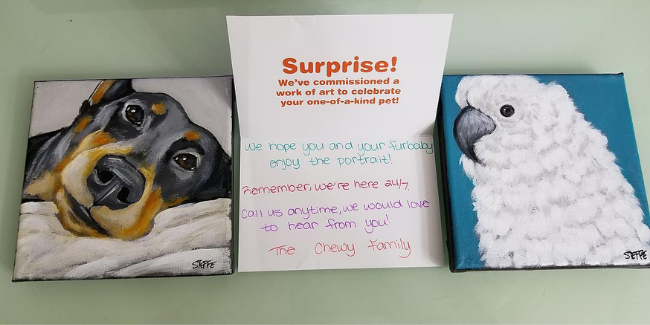
Thank You Letter Examples
1. Omsom
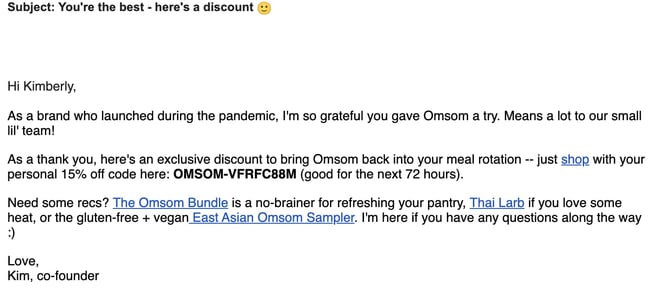
Why it works:
2. Goldbelly
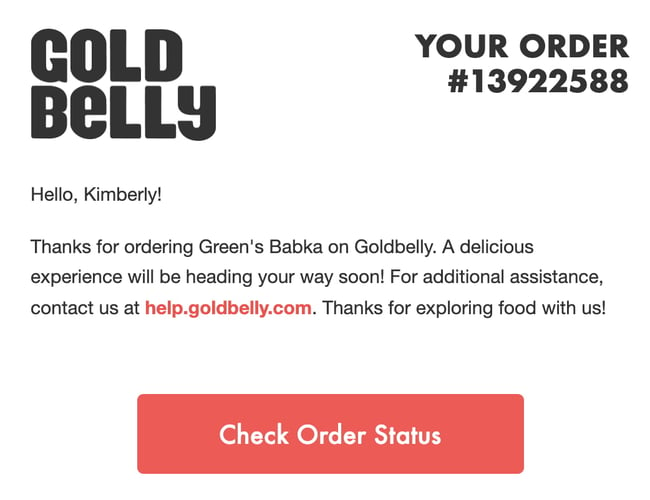
Why this works:
3. JetBlue
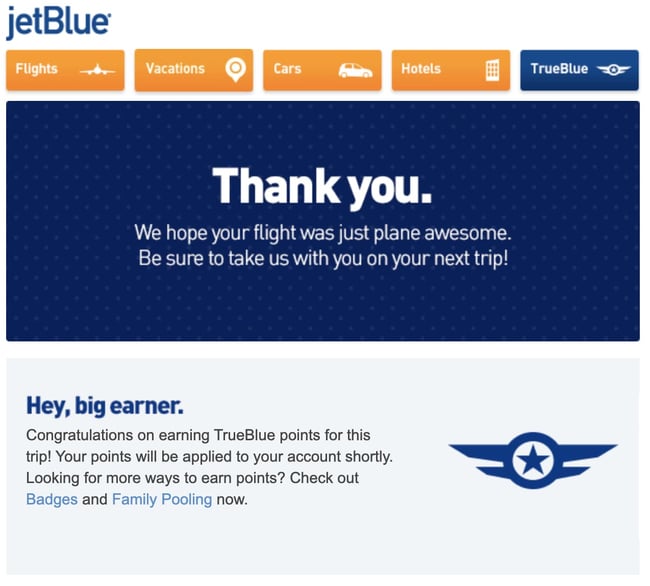
Why it works:
4. Cxffee Black
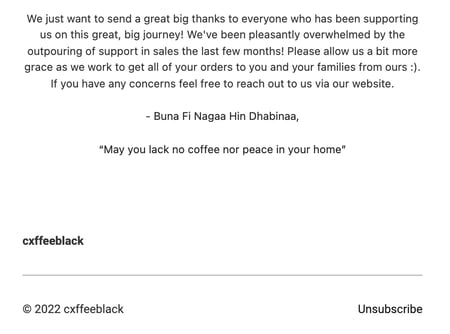
Why it works:
5. Snooze Hotel
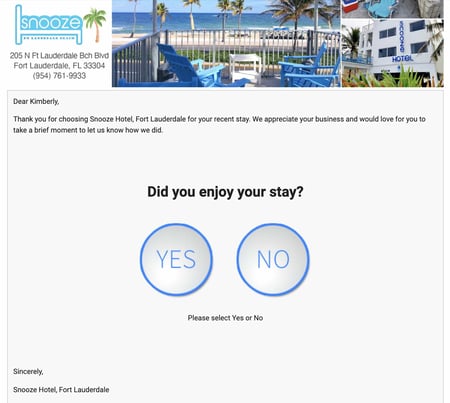
Why it works:
6. World Wildlife Fund

Why it works:
7. The Floor
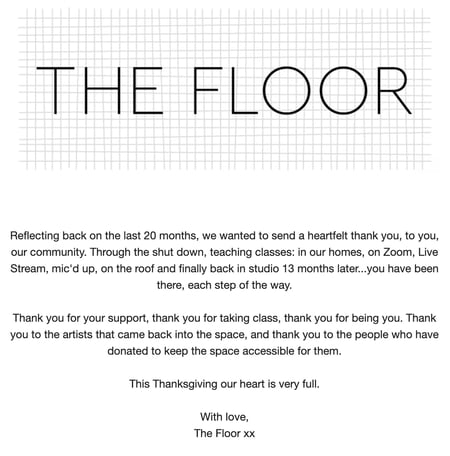
Why it works:
8. Capital One
Why it works:
9. UH Bikes
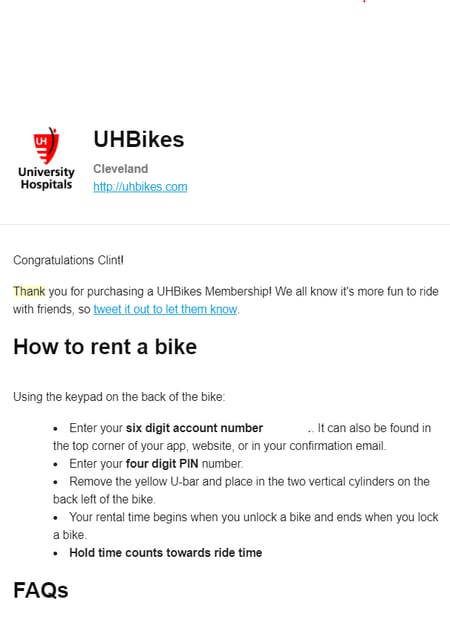
Why it works:
10. HubSpot
 This thank you email follows all of the steps we listed above. It begins with a friendly greeting, expresses gratitude for your sign-up, acknowledges the future relationship we'll have. Then it thanks the reader again before signing off.
This thank you email follows all of the steps we listed above. It begins with a friendly greeting, expresses gratitude for your sign-up, acknowledges the future relationship we'll have. Then it thanks the reader again before signing off.Why it works:
11. Marie Forleo
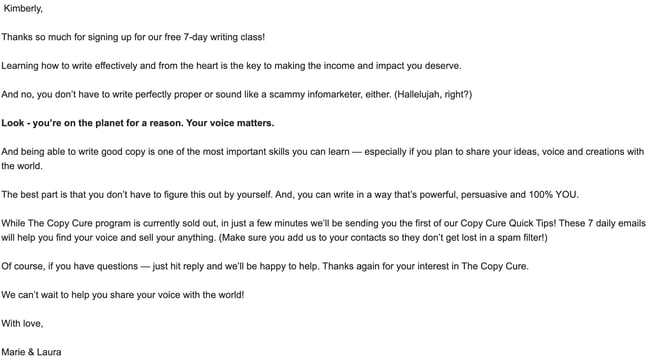 This letter is both encouraging and informative. It gets the reader excited about the free course, boosts their confidence that they can be successful, provides information on next steps, and tells them who to contact for assistance. It's a great example of how a sign-up thank you note can spark interest and dialogue.
This letter is both encouraging and informative. It gets the reader excited about the free course, boosts their confidence that they can be successful, provides information on next steps, and tells them who to contact for assistance. It's a great example of how a sign-up thank you note can spark interest and dialogue.Why it works:
Thank You Letter Template
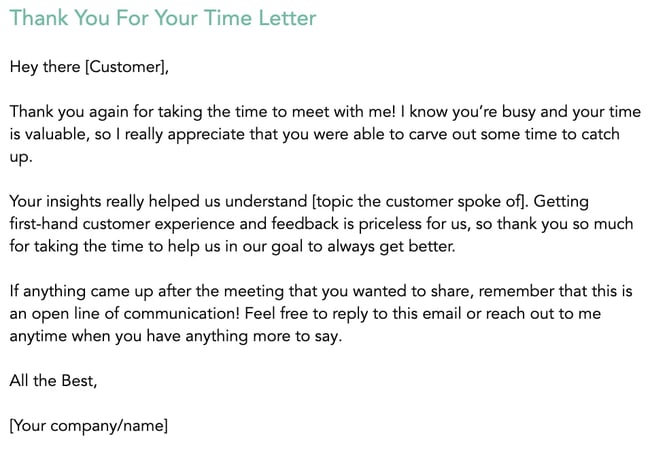 For more thank you notes that can be used in multiple scenarios, download our free customer thank you letter templates.
For more thank you notes that can be used in multiple scenarios, download our free customer thank you letter templates.Delight Your Customers With Thank You Letters
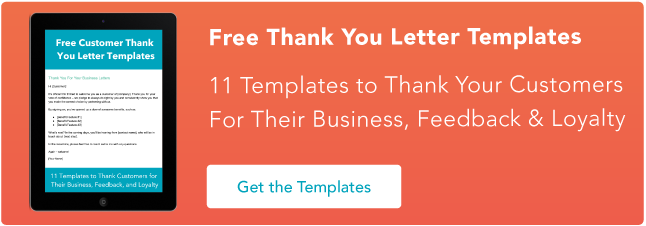

Originally published Apr 19, 2022 7:00:00 AM, updated April 19 2022
Source: https://blog.hubspot.com/service/thank-you-letter-customer
0 Response to "Thank You Again for Another Year of Your Service"
Enregistrer un commentaire